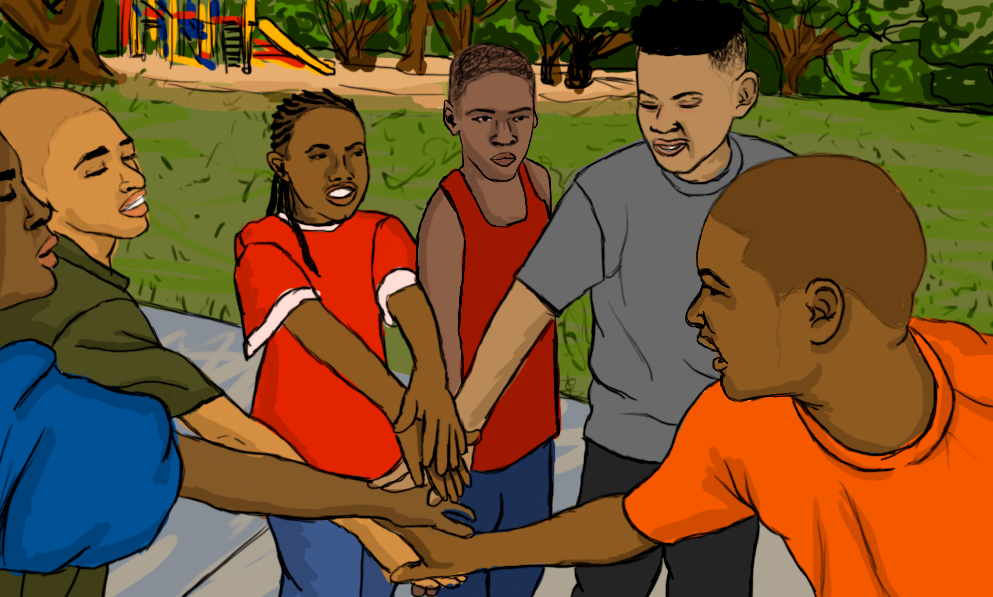Power of Pop: Media Analysis of Immigrant Representation in Popular TV Shows
Introduction
In the weeks following the 2016 presidential election, and the almost immediate threats posed to the civil liberties of immigrant and Muslim communities, the long-running sketch show Saturday Night Live emerged as one of the most vocal and widely viewed critics of the new administration. Melissa McCarthy’s now infamous characterization of White House Press Secretary Sean Spicer is just one example of the critical role humor and satire have come to play in challenging abuses of power and also in providing much needed relief and hope in the new Trump era.
Popular culture—which can be defined as “those elements of culture capable of sustaining and perpetuating themselves based on endorsements and participation by large groups of people”1—has long been recognized as a space of creative expression that has given way to lasting social and cultural change. Popular culture has the power to shape our understanding of complex issues and our attitudes toward people we perceive to be different.
However, when depictions in popular entertainment persistently reflect biases, stereotypes, and inaccuracies about people and communities, they help sow division and drive audiences toward unhelpful and inaccurate perceptions. Such negative outcomes have been widely documented in existing research, which has shown how patterns of stereotypical depictions of black men and boys, and communities of color in general can negatively affect people’s attitudes toward these groups.2 As popular entertainment continues to shape the cultural and political landscape, and is increasingly recognized as an important predictor of political decision making, identifying harmful trends and understanding how to counter them through better informed storytelling, media literacy, and advocacy will be of critical importance.
In an effort to better understand the role popular entertainment is playing in shaping attitudes toward immigrants and immigration, this report examines narratives concerning immigrants, immigration, and border communities within a medium with the largest reach and one of the highest levels of audience engagement—broadcast, cable, and streaming television. According to the latest data published by Nielsen, television remains the most widely consumed medium among American adults.3 Eighty-six percent of adults (aged 18+) watch television an average of 5 days a week. This figure increases to 92 percent for individuals 50 and older.4 These statistics do not include the millions of Americans who now access television content through streaming services such as Netflix, Hulu, and Amazon Prime. As of 2015, Netflix alone had an estimated 60 million subscribers. In addition to attracting large audiences, television programs have been shown to play a central role in shaping dominant narratives and social norms, particularly attitudes toward people of color, immigrants, formerly incarcerated people, and other traditionally marginalized communities.
This study sets out to answer several key questions: What are the dominant narratives concerning immigration, immigrants, immigrant communities, and related topics as presented in popular television programs; what common storylines or themes emerge; what types of characters or spokespeople are generally represented; and how are these overarching narratives, themes, and characters discussed by engaged audiences on social media?
The report begins with an overview of the frequency and quality of immigrant character representation, dominant narratives, and themes that tend to be associated with immigrants and immigration and concludes with recommendations for audience engagement.
Acknowledgments
The Opportunity Agenda wishes to thank and acknowledge the many people who contributed their time, energy, and expertise to the research and writing of this report. The media content analysis was designed and conducted by Austen Lazarus and Lucy Odigie-Turley. The report was written by Lucy Odigie-Turley, and the recommendations were drafted with the support of Julie Fisher-Rowe, Betsy Richards, and Janelle Heller-Treibitz. Accompanying illustrations were created by founder and president of Graphic Advocacy Project, Hallie Jay Pope, and the report was designed and formatted by Lorissa Shepstone of Being Wicked. This research was supervised and edited by Juhu Thukral.
We also want to express our great appreciation to Margo Harris, who edited and proofread the report, and Ross Mudrick for providing publication and editing assistance.
Finally, this research would not have been possible without the generous support of our funders: Unbound Philanthropy, The Ford Foundation, The Ford Freedom Fund, Oak Foundation, The Nathan Cummings Foundation, Libra Foundation, JPB Foundation, The Open Society Foundation, and W.K Kellogg Foundation.
About The Opportunity Agenda
The Opportunity Agenda was founded in 2006 with the mission of building the national will to expand opportunity in America. Focused on moving hearts, minds, and policy over time, the organization works with social justice groups, leaders, and movements to advance solutions that expand opportunity for everyone. Through active partnerships, The Opportunity Agenda synthesizes and translates research on barriers to opportunity and corresponding solutions, uses communications and media to understand and influence public opinion, and identifies and advocates for policies that improve people’s lives. To learn more about The Opportunity Agenda, go to our website at www.opportunityagenda.org.
1 PopJustice, Nathan B. Cumming Foundation, 2016, p. 11. Retrieved April 17, 2017.
2 The Opportunity Agenda, ”Media Portrayal of Black Men and Boys,” 2013. Retrieved April 20, 2017.
3 Nielsen, “The Nielsen Total Audience Report Q1 2016,” 2016. Retrieved January 15, 2017.
4 Ibid.




